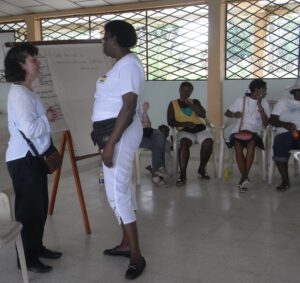
After a long and worldwide fight for equality, the United Nations adopted the concept of gender mainstreaming in 1995, during the World Conference on Women in Beijing. In 1999, the European Union followed with the Treaty of Amsterdam. Since then, this strategy has become widely accepted and applied in the area of public institutions and development cooperation in order to overcome gender injustice.
If we want to overcome discrimination and to achieve full participation of women in organisations, I have experienced and I am convinced that gender differentiation constitutes a fundamental criterion for analysis and planning.
For this reason, gender differentiation constitutes an important criterion for analysis and planning in all of my proposals:
- How are women and men involved in the project?
- Whom exactly do the planned measures benefit?
- Are the methods proposed such that they can be adequately applied by all genders?
- When and where do the measures take place?
- Do they also benefit people who have family responsibilities? Are they actively involved?
Applying gender mainstreaming, I am aware of the fact that the focus on “men” and “women” is an attribution and, as such, it cannot fully capture the complex and different manifestations of all genders to the fullest.
